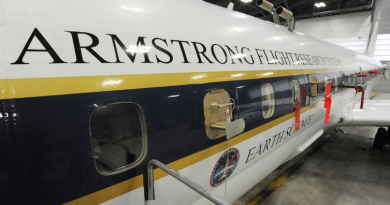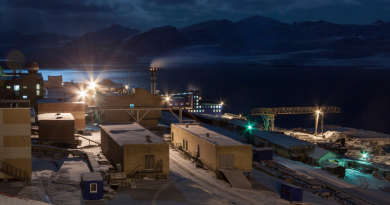Melting Arctic could create shipping superhighway… and a surge in emissions: study
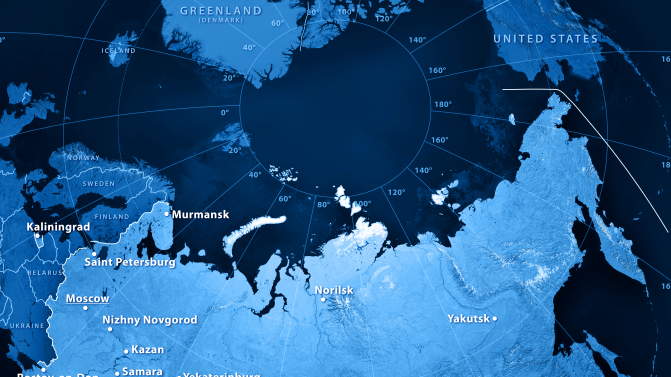
As the Arctic warms and sea ice retreats, once-impassable waters at the top of the globe will increasingly open to commercial shipping, something that could cause a surge in emissions, says a new study.
The research looks at the Arctic Sea Route (ASR), made up of three major passages: Russia’s Northern Sea Route, Canada’s Northwest Passage through the Canadian Arctic Archipelago, and the Central Arctic Route, which would cut straight across the North Pole once year-round sea ice has thinned enough to allow navigation.
Many shipping companies have hailed these emerging routes as a climate win, arguing that fewer days at sea mean less fuel burned and lower emissions.
But instead of cutting pollution, the Arctic shortcuts could drive a sharp increase in global shipping emissions, while concentrating climate impacts in the northern hemisphere, the research said.
“Our results indicate that access to the ASR will increase global shipping emissions by 8.2 per cent by 2100,” the study’s authors said.
“In the Arctic itself, emissions are projected to rise from just 0.22 per cent of the global total to 2.72 per cent.”
Shorter routes, but more ships
The opening up of the Arctic Sea Route is something that could shorten voyages between Europe and Northeast Asia by up to 40 per cent, cutting travel times by nearly two weeks in some cases.
But the Chinese study, published this week in the journal Nature, said that while individual journeys would use less fuel, overall traffic would grow — especially from oil, gas, and chemical tankers.
“Most Arctic voyages will be carried out by oil, gas, and chemical tankers because that is where the strongest demand lies,” Pengjun Zhao, the study’s lead author, told Eye on the Arctic.
“For heavy, fuel-intensive cargoes such as crude oil, gas, and industrial chemicals, these savings are decisive, directly lowering transport costs on voyages that consume vast amounts of fuel. Russia’s expanding role as a major exporter further reinforces this pattern, with its northbound oil and gas flows naturally aligned with Arctic corridors. In short, these tankers are both the engines of Arctic shipping growth and the ships with the most severe climate and ecological consequences.
“By contrast, container ships are tied to global hub-and-spoke port networks and therefore have far less incentive to reroute, leaving their Arctic footprint relatively modest.”
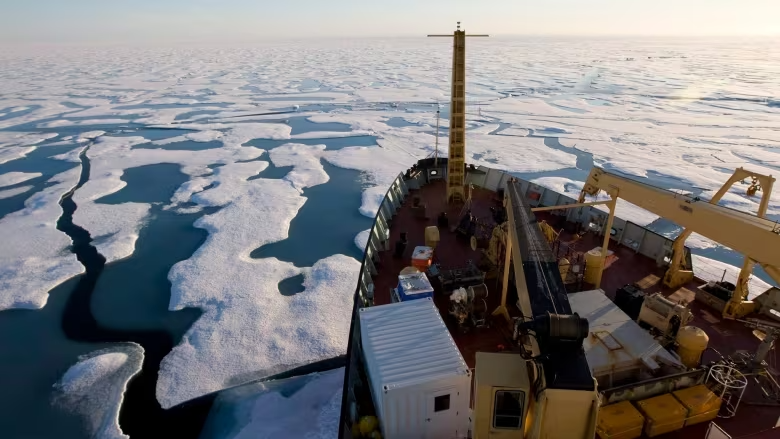
The researchers’ modeling found that by 2100, it’s possible Arctic voyages could number over 500,000, making the region a global shipping hub.
“Although access to the ASR reduces voyage distances, these efficiency gains will be overwhelmed by the scale of increased traffic growth,” the study said.
A northern shift in emissions
To do the study, the researchers built a computer model that combined global trade forecasts, Arctic shipping routes, and billions of ship-tracking signals and trade data. Then they tested different scenarios and how they would be affected by different climate policies, to estimate how much pollution the new Arctic routes would generate.
Once they crunched the data, they found that most of the new pollution would be concentrated in the world’s northern shipping corridors.
“Nearly all of the additional carbon burden is concentrated in the Northern Hemisphere (over 98 per cent),” the study said.
“Environmental disparities in exposure to emissions will increase since Northeast Asia, Northern Europe, and North America will experience particularly large increases in emissions due to rerouted shipping flows.”
Some of the emission increases projected in the new study:
- North America: emissions along US–UK routes will triple
- Europe: Oslo–Rotterdam corridor emissions expected to grow sixfold
- Northeast Asia: emissions through Taiwan, Luzon, and Tsugaru Straits could climb by 30–50 million tonnes annually
By contrast, the Suez and Panama Canals may see slight declines, the study said.
Testing climate policies
The team also evaluated how three climate policy strategies could affect the outcomes: the International Maritime Organization’s 2023 emissions strategy (which sets new targets for shipping and assumes a global shift toward low- and zero-carbon fuels), the Green Corridor strategy that promotes clean fuels on selected routes, and a net-zero strategy.
Under the IMO plan, Arctic emissions would still rise to about 1.3 megatonnes by 2070. The Green Corridor strategy performed slightly better but created a “rebound effect” — where ships rerouted to less regulated areas, leading to a 22 per cent rise in global emissions when the ASR is used.
“Our evaluation of decarbonization strategies also indicates that current international efforts fall short of mitigating ASR-induced emissions, particularly in the Arctic,” the researchers said.
Summary of the three climate policies tested in the study:
- IMO 2023 strategy: gradual adoption of low-carbon fuels
- Green Corridor strategy: clean fuels used on certain routes
- Net-Zero strategy: a universal shift to hydrogen, electricity, or nuclear propulsion, starting in the Arctic by 2040
Only the net-zero approach, which requires strict zero-emission fuels such as hydrogen, electricity, or nuclear propulsion, eliminates Arctic emissions entirely by 2100.
“Partial or geographically constrained policies cannot safeguard the Arctic from long-term emissions growth,” the authors said.
But the researchers added that even net-zero wouldn’t protect the North from the knock-on effects of a ship traffic boom.
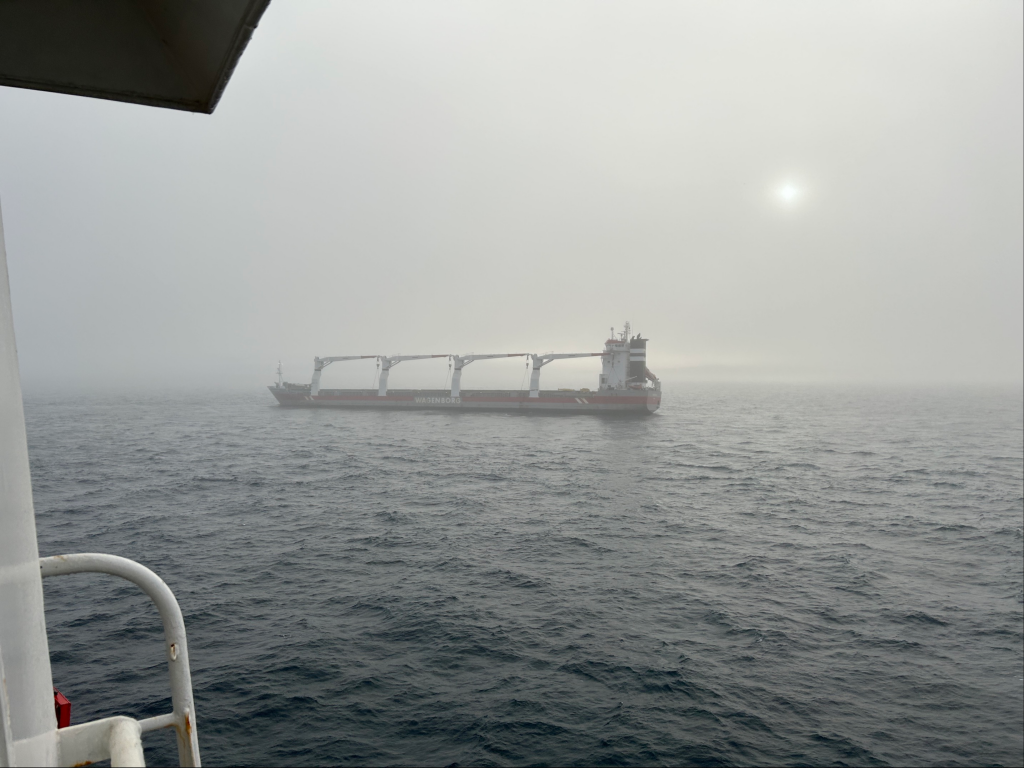
Increased noise pollution, oil spill hazards, and invasive species carried in ballast water are all things that could also impact the fragile polar ecosystems and the Arctic communities that depend on them.
“Realizing a sustainable maritime future requires harmonized global governance,” the study said, something they say would ensure that “… economic gains do not come at the expense of irreversible harm to one of the planet’s most climate-sensitive regions.”
Lead researcher Pengjun Zhao said that harmonized governance must go hand in hand with strong enforcement of existing rules in Arctic waters.
“Without credible enforcement, the Arctic could become a haven for high-emission shipping, undermining both climate goals and the fragile ecosystems we’re trying to protect,” he said.
“Rigorous oversight now buys time, keeps operators accountable, and shows that the Arctic will not be treated as a regulatory loophole while the world works toward zero-emission fuels.”
Write to Eilís Quinn at eilis.quinn(at)cbc.ca
Related stories from around the North:
Canada: Canada green-lights company’s plan to salvage stranded Arctic ship, Eye on the Arctic
Norway: Hybrid-powered electric cruise ship navigates Northwest Passage, CBC News
Russia: Governor inks deal with Chinese shipper, touts Murmansk as ‘Icy Silk Road’ hub, The Independent Barents Observer
United States: U.S. Coast Guard monitors Chinese ships in Arctic waters…again, Eye on the Arctic

